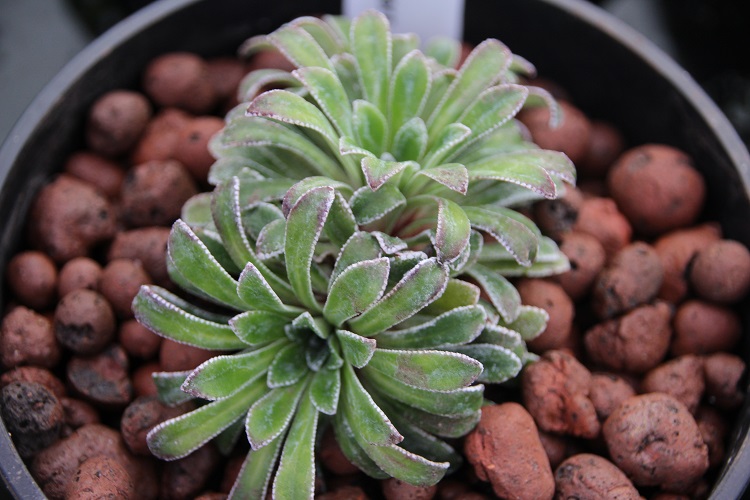 |
A silvery saxifrage with long arching spiked densely covered in large white flowers. It is a classic alpine plant, never flowered here, hated my conditions
and died in protest. Not a success, not really missed. Writing in the Journal of the RHS in 1987, Wilby Nye said: "The queen of saxifrages is a fitting name for this lovey plant, among the silver or encrusted saxifrages. But one great drawback is that the plant dies after flowering. Flowering plants make offsets round the base of the rosette and these must be taken off and rooted otherwise they will also flower. Taking the cuttings is a very delicate operation, done with a sharp knife. The cuttings should be taken with a 'heel', ie, a bit of the parent stem, and I root mine in pure silver sand. Once rooted the plants need to be kept growing, by potting on three or four times into larger pots. I use a mixture of 3 parts loam, 1 part peat or leafmould, 3 parts silver sand or good clean sharp sand, plus 2 parts mortar ruffle, if availble, and two or three handfuls of bonfire ash. The mixture must be well drained as this is what saxifrages are used to in the wild. I find that the best way to grow these plants on to flowering is to grow them in pots or pans in the alpine house or deep frames. Of the plants shown at the RHS flower show in mid-June, the largest ones had taken two to three years to produce long sprays, one of which was nearly a yard long. Outside 'Tumbling Waters' can be grown in the rock garden, but it must be in a crevice to prevent the rain from getting into the rosete. In a large crevice flower sprays of up to 2 feet may be produced. In a smaller crevice the spray will be shorter." |
|